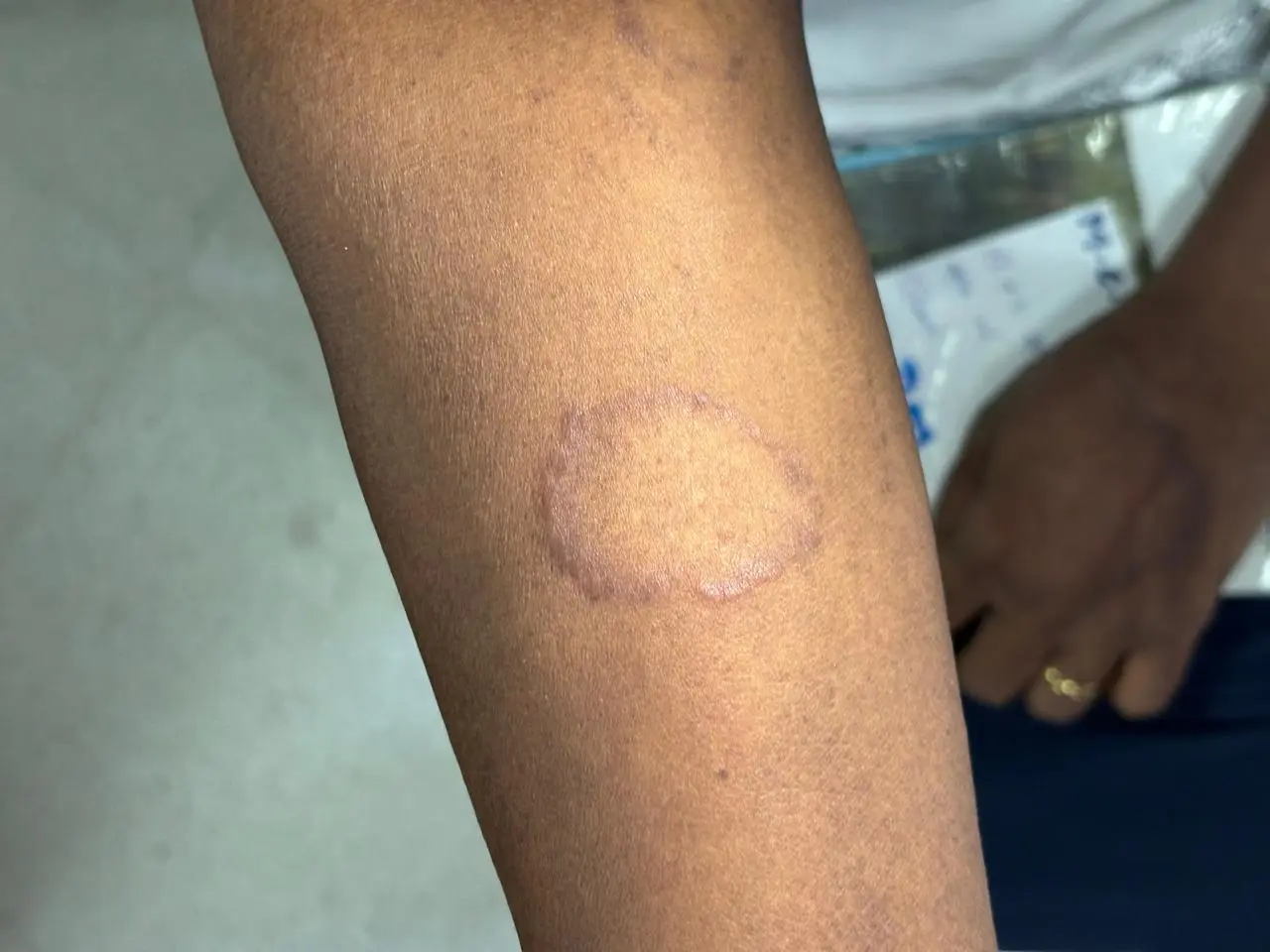What is ringworm?
Ringworm, or tinea corporis, is a common, superficial infection of the skin caused by fungus. The term 'ringworm' describes its characteristic circular, expanding feature due to its lateral growth. Worms do not cause it.
Dermatophyte fungi predominantly cause this in the genera Trichophyton, Microsporum and Epidrmophyton. Further, they are categorized as anthropophilic, zoophilic or geophilic, depending on whether their primary source is humans, animals or soil.
Ringworm infection occurs worldwide but is more common in tropical countries. It is mainly found in adolescents and young adults, though rare cases have been reported in newborns.
How does it appear?
The infection initially starts as a flat, scaly, red spot. Then, it spreads outward, forming a raised, reddish, scaly leading edge exhibiting the ringworm appearance. The central area becomes brown or paler in colour and clearer without scales. The border is often circular and irregular. Occasionally, it presents with raised tiny bumps with or without pus. These lesions are mildly itchy. When multiple lesions are present, they may overlap together, forming a polycyclic pattern. Lesions are most commonly present over exposed areas in adults, while the trunk is most commonly affected in children.
Tinea corporis can be present with some other clinical variations as well:
Kerion
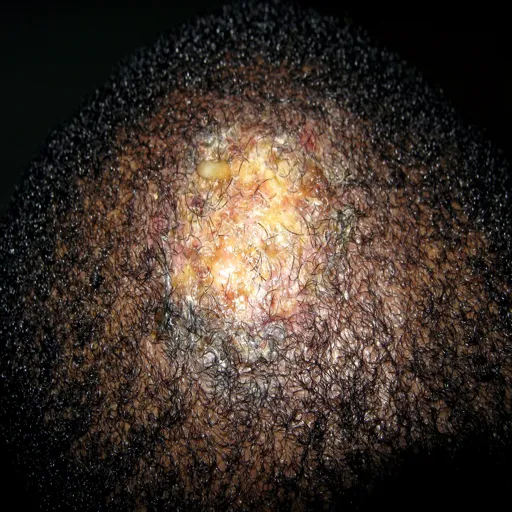
Image: “Kérion 02” by Dr. Lucien Mahin, licensed under CC BY-SA 3.0 , via Wikimedia Commons.
Tinea corporis over the scalp varies from mild, diffuse scaling without hair loss (this looks like dandruff) to the more typical appearance of bald, scaly patches with broken hair. An increased host response can cause severe inflammation, forming exudates, swelling, and pus-filled nodules called kerion. This is often misdiagnosed as a bacterial infection and inappropriately treated with antibiotics.
Tinea gladiatorum
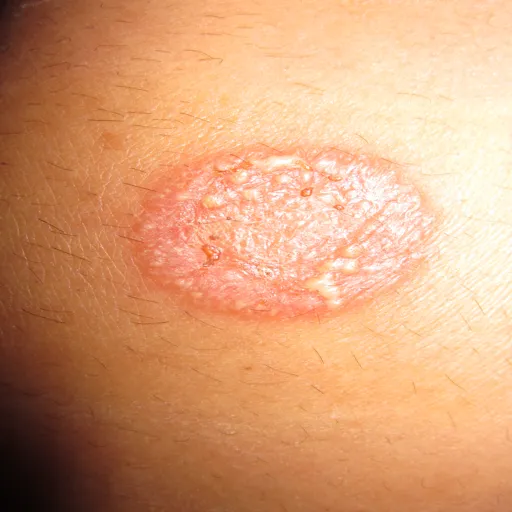
Image: “Tinea corporis” by Corina G., licensed under CC0 1.0 Public Domain Dedication , via Wikimedia Commons.
Here, the lesions are predominately present on exposed areas like the head, neck and arms. This condition is most common in people who engage in contact sports like wrestling or martial arts.
Tinea_incognito
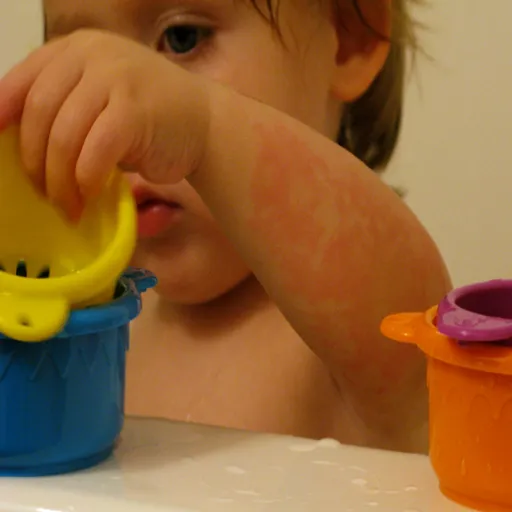
Image: “Majocchi granuloma new image in 2019” by Mohammad2018, licensed under CC BY-SA 4.0 , via Wikimedia Commons.
The typical picture of ringworm has been lost here due to suppressed inflammatory reactions caused by the use of corticosteroids or calcineurin inhibitors. The lesion appears less reddish, less scaly, less itchy and without distinct margins, but the affected area is larger than in typical lesions.
Majocchi granuloma
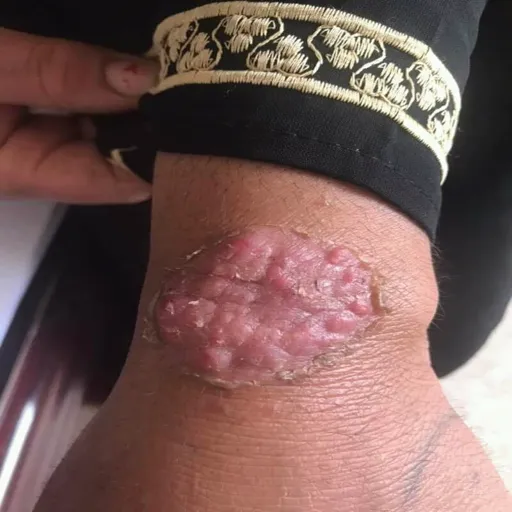
Image: “Majocchi granuloma new image in 2019” by Mohammad2018, licensed under CC BY-SA 4.0 , via Wikimedia Commons.
This is another variant of tinea corporis. While typical infection does not penetrate beyond the outer layers of the skin, in this case, fungi penetrate into the dermal or subcutaneous tissue along the hair follicle, or it may occur due to trauma to the skin. These present as small, pus-filled nodules near hair follicles and are found in immunocompromised individuals or people treated with topical corticosteroids.
Bullous tinea corporis
This variant is rare. Present with fluid-filled blisters.
How do you get it?
Ringworm spreads via the shedding of fungal spores. Close contact with someone who has the infection, contact with contaminated objects or soil with spores and even infected animals can spread the infection.
It is easily transmitted among household family members through spores by shared towels, clothing, and bedding. Wearing tight, occlusive clothing, as well as hot, humid weather, facilitate disease transmission. Dermatophyte infection elsewhere on the skin, like fungal infection of the foot (tinea pedis), can also infect the same person. This is called autoinfection.
Risk factors include:
- Previous history or existing tinea infection
- Immunodeficiency
- Diabetes mellitus
- Hyperhidrosis (excessive sweating)
- Xerosis (abnormally dry skin)
- Ichthyosis (a skin condition with a fish scale-like surface)
- Having affected family members
- Household crowding
- Wearing tight occlusive clothing
- Pets in home
- Recreational activities involving close contact like wrestling, martial arts etc
- Genetic predisposition
How to prevent it?
- Avoid close contact with infected people and sharing fomites
- Keep skin dry and clean
- Wear loose, light-fitting clothing
- Examination of household members and pets for the source of infection
- Seek medication for other existing tinea infections
If you are already infected?
- Maintain your general hygiene. Keep your skin dry and clean. Bathe regularly. Keep fingernails short.
- Wear loose, light-fitting clothes. Wash your clothes, dry them properly and iron them to ensure that you are wearing clean, dry clothing.
- Seek medical treatments. Localized lesions may respond to topical antifungal applications like terbinafine and imidazole, while oral medications may be needed for more complicated cases.
- Take medications as prescribed, as recurrence is common. It is necessary to apply topical antifungal agents at least 2cm beyond the lesion once or twice daily for about 2-4 weeks.
Conclusion
Tinea corporis is a common, preventable and treatable condition. Its prognosis is excellent with proper medication. Complete eradication of the infection is important to prevent recurrence. As other skin conditions with circular lesions can mimic tinea corporis, it is necessary to seek professional medical care.
Reference: Tinea corporis (Body Ringworm) — DermNet
